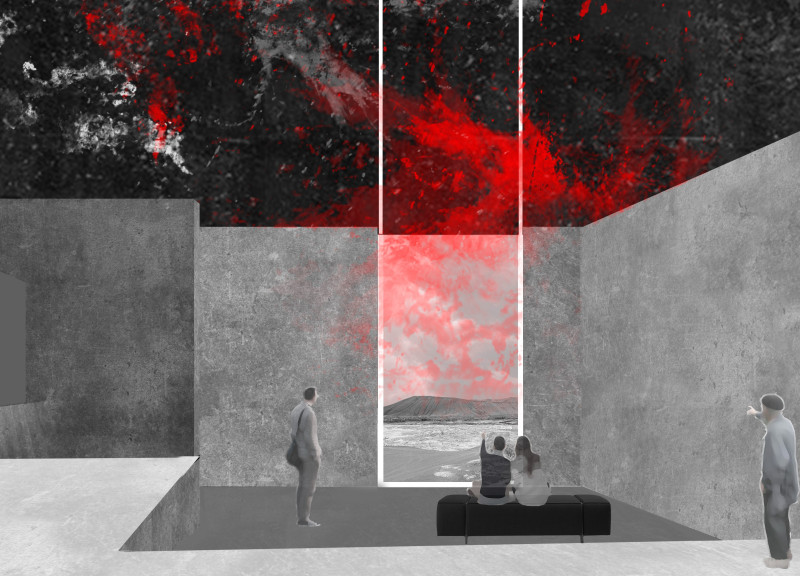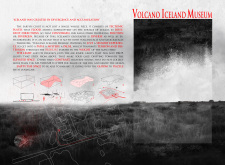5 key facts about this project
The Volcano Iceland Museum is designed to engage visitors with the incredible geological landscape of Iceland, a country shaped by active tectonic forces. Located in a setting that reflects the region’s dynamic nature, the museum functions as both an educational space and a place for visitors to reflect on the natural processes that have shaped the land. The design concept emphasizes the themes of divergence and accumulation, drawing from the movements of tectonic plates that contribute to Iceland's distinct geography.
Spatial Organization
The layout of the museum guides visitors on a sensory journey through various pathways that encourage exploration. Spaces are thoughtfully arranged to create contrasting environments, moving between large, airy areas and smaller, more intimate settings. This arrangement enhances the visitor experience by allowing interaction with exhibits while also fostering a connection to the surrounding landscape.
Light and Atmosphere
Natural light plays a central role in the design, affecting how spaces are experienced. Windows and openings are strategically placed to let in light, which changes throughout the day, casting dynamic shadows and creating varied atmospheres inside the museum. The thoughtful use of light highlights the relationship between architecture and the natural world, enriching the environment for contemplation and learning.
Materiality and Context
While the materials used in construction are not specifically mentioned in the presentation, it is reasonable to expect that the design incorporates elements that resonate with the local environment. The finishes and details likely draw inspiration from Iceland's geology, ensuring the museum aligns with its natural context. This choice of materials aims to enhance the landscape's inherent beauty rather than compete with it.
The design features high-rise rooms paired with spacious voids to promote airflow and maintain a comfortable indoor climate. Visitors are invited to navigate the museum at their own pace, engaging with the exhibits while also finding opportunities for quiet reflection amidst the dramatic architectural elements. The thoughtful design encourages people to consider the powerful natural forces that have shaped Iceland over time.






















































